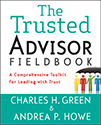This post is part of our Weekly Tips series.
One important reminder so far: be very intentional about how you begin a call with a client (new or otherwise). One firm almost lost me at “hello.”
Very brief background: We vetted three firms, then sent email messages to each asking if they’d like to be considered. We crafted those emails carefully, customized as needed. We were transparent about our goals, approach and more. We included attachments and links. We invited them to join us on a phone call to explore the possibilities, and offered to be available for interim questions.
Firm #1 reminded me to never do this with my clients: Start the call (post-pleasantries) saying, “So, tell me a little bit about what you’re looking for.” That was the team leader’s opener during their time with us.
The problem wasn’t Firm #1’s intentions, which I’m sure were quite good: to be curious, interested, get us talking. The problem was giving us zero indication that they had been listening.
Contrast with Firm #3’s opener (post-pleasantries): “I looked through the materials you shared, which were very helpful, thank you. I reviewed all the links and the documents and I think I’m starting to get a good feel for what you want. I’d love to hear more about xyz.”
Firm #3 proved a lot of things in just three sentences:
- They’d done some homework
- They made good use of what we provided
- They were paying attention
- They were interested in engaging further.
Firm #3 left little to no chance—good intentions or otherwise—that we’d prematurely conclude they were lazy or arrogant or ambivalent.
Brevity is key, of course. Too much talking up front would have run a different kind of risk (as was the case with Firm #2—more on them next week).
I think the primary lesson here applies equally to your first call with a new client or your 100th with a long-standing one. There are numerous ways to open with a brief demonstration that you’re paying attention. You could quickly recap the last conversation, frame up today’s agenda based on what you know so far, or comment on a recent LinkedIn update or tweet—to name a few.
Side note: Firm #1 is still in the running. When I responded by asking them to help focus the conversation a bit more, they did. Plus the rest of the call was really impressive. Second reminder: Mistakes are inevitable; how you handle them reveals your true character.
Make It Real
This week, be intentional about how you begin your client communications. Consider weekly status checks, exploratory conversations, and more—both email and real-time. How might you give a brief up-front indicator that you’re really listening? Choose three interactions to focus on.
Learn More

- Find out more about why screening and selection are two very different parts of the buying process, from our friends at Trusted Advisor Associates, or learn how to “ditch the pitch” in Chapter 13 of The Trusted Advisor Fieldbook: A Comprehensive Toolkit for Leading with Trust.
Andrea Howe
Latest posts by Andrea Howe (see all)
- Role models for healthy candor - May 27, 2025
- A small gesture (and related risk) with big trust impact (Part II) - April 1, 2025
- A small gesture (and related risk) with big trust impact (Part I) - March 3, 2025
